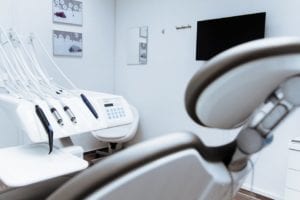Written by Jessica Patella, ND. While extra oral application of an 808-nm diode laser, but not ozone therapy, had a positive effect on postoperative swelling and trismus after a surgical removal of impacted lower third molars, both therapies significantly reduced pain.
 One of the most common oral surgeries is the removal of wisdom teeth 1,2. The most common side effects from surgery are pain, swelling and restricted ability to open the mouth due to muscle spasms 1,3. Currently, the most common treatment for the side effects of surgery are corticosteroids and non-steroidal anti-inflammatory drugs 1,4. Because of the side effects of these drugs, such as gastric bleeding, alternative methods are being researched. Research has found ozone treatment and laser therapies can improve post-operative recovery from wisdom tooth removal 1.
One of the most common oral surgeries is the removal of wisdom teeth 1,2. The most common side effects from surgery are pain, swelling and restricted ability to open the mouth due to muscle spasms 1,3. Currently, the most common treatment for the side effects of surgery are corticosteroids and non-steroidal anti-inflammatory drugs 1,4. Because of the side effects of these drugs, such as gastric bleeding, alternative methods are being researched. Research has found ozone treatment and laser therapies can improve post-operative recovery from wisdom tooth removal 1.
Ozone therapy has been used for many years in medicine and in dentistry has been shown to improve oxygen supply, stop bleeding and inhibit bacterial growth 5. Low-level laser therapy also is being used to reduce inflammation and swelling, while promoting the healing of tissues 6. Both of these alternative options were reviewed in the research.
The participants were randomized to three different groups, the ozone treatment group (n=20), the laser therapy group (n=20) and a control group (n=20). The ozone therapy was performed with an ozone generator (high frequency 7.5 cm deep tissue probe to the masseter muscle, intensity of 80% for 10 seconds) immediately after surgery, and post-operatively at day 1, 3 and 7. The laser therapy was performed extra-orally (gallium-aluminum-arsenide diode laser, continuous wavelength of 808 nm for 120 seconds) immediately after surgery and post-operatively at day 1, 3 and 7 1.
The results were as follows:
- At the first (p=0.025) and third (p=0.033) post-operative days, difficulty opening the mouth was significantly lower in the laser therapy group compared to the ozone and control groups, however, on day 7 values were similar in all three groups (p>0.05).
- Participants in the ozone therapy and laser therapy groups experienced a significantly lower degree of pain than the control group (day 1 p=0.012, day 3 p=0.035, day 7 p=0.44).
- Participants in the ozone therapy and laser therapy groups took significantly fewer pain medications compared to the control group (p<0.05).
- The laser group had significantly lower post-operative swelling (day 1 p=0.039, day 3 p=0.041).
In conclusion, both ozone and laser therapies were found to be useful for reducing post-operative pain from wisdom tooth removal and increase quality of life 1. Laser therapy was also helpful in reducing post-operative swelling and difficulty opening the mouth due to spasms (1). Researchers recommended increasing the sample size to confirm findings 1.
Source: Kazancioglu, Hakki Oguz, Seref Ezirganli, and Nihat Demirtas. “Comparison of the influence of ozone and laser therapies on pain, swelling, and trismus following impacted third-molar surgery.” Lasers in medical science 29, no. 4 (2014): 1313-1319.
© Springer-Verlag London 2013
Posted May 29, 2018.
References:
- Kazancioglu HO, Ezirganli S, Demirtas N. Comparison of the influence of ozone and laser therapies on pain, swelling, and trismus following impacted third-molar surgery. Lasers in medical science. 2014;29(4):1313-1319.
- Bamgbose BO, Akinwande JA, Adeyemo WL, Ladeinde AL, Arotiba GT, Ogunlewe MO. Effects of co-administered dexamethasone and diclofenac potassium on pain, swelling and trismus following third molar surgery. Head & face medicine. 2005;1(1):11.
- Barone A, Marconcini S, Giacomelli L, Rispoli L, Calvo JL, Covani U. A randomized clinical evaluation of ultrasound bone surgery versus traditional rotary instruments in lower third molar extraction. Journal of oral and maxillofacial surgery. 2010;68(2):330-336.
- Ferrante M, Petrini M, Trentini P, Perfetti G, Spoto G. Effect of low-level laser therapy after extraction of impacted lower third molars. Lasers in medical science. 2013;28(3):845-849.
- Baysan A, Whiley R, Lynch E. Antimicrobial effect of a novel ozone–generating device on micro–organisms associated with primary root carious lesions in vitro. Caries Research. 2000;34(6):498-501.
- López-Ramírez M, Vílchez-Pérez MÁ, Gargallo-Albiol J, Arnabat-Domínguez J, Gay-Escoda C. Efficacy of low-level laser therapy in the management of pain, facial swelling, and postoperative trismus after a lower third molar extraction. A preliminary study. Lasers in medical science. 2012;27(3):559-566.

